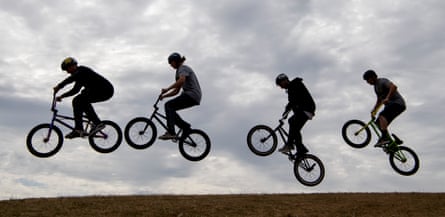Cycling in Australia faces unprecedented upheaval, with voting underway to unify the 19 separate entities responsible for the sport across the country. While the proposed restructuring is intended to facilitate better outcomes for elite and recreational cyclists, create “one voice” for advocacy and improve the sport’s financial position, resistance to the reform risks leaving cycling in disarray.
“This is a real opportunity to create significant change for the better,” says Scott McGrory OAM, an Olympic gold medal-winning cyclist who now works as a race director. “Doing nothing is, quite simply, stupid. This is a ‘do or die’ moment for Australian cycling.”
In 2018, federal agency Sport Australia commissioned a governance review from Ernst & Young, with the support of the three national sporting organisations: Cycling Australia, BMX Australia and Mountain Bike Australia. The consultancy’s subsequent 128-page report identified that cycling is “fragmented in its structure, strategy and delivery”. The division of cycling into three disciplines, with two possessing constituent state and territory organisations, left individual entities with “few assets, restricted revenue opportunities and limited capacity”.
This year, the three NSOs proposed a complete unification, merging the three cycling disciplines, and the 19 constituent bodies, to form “AusCycling”. Among the suggested benefits of this model are a single racing licence, improved commercial and advocacy outcomes, and more resources as a result of efficiencies. Sport Australia has also promised A$2.5m if the merger proceeds.
“This proposal is about making cycling as strong as it can be,” CA chief executive Steve Drake tells Guardian Australia. “I have always loved cycling – I want to see it prosper. This is the way it can.”
The three NSOs have promised that no jobs will be lost as a result of the merger, except the three chief executive roles. “It was never going to be possible for the CEO of, say, CA to be the CEO of AusCycling, because it would be a perceived as a CA takeover.” A new, external CEO will be sought to lead the unified organisation.
While staffing levels are expected to remain static or even grow, organisational synergies and improved negotiation power are expected to substantially improve the sport’s financial position. EY estimated an annual saving of about A$2m; the NSOs have indicated all savings will be reinvested.
“We want to remove duplicated systems and avoid wasted effort,” says Drake. “At the moment we have 19 legal entities with 19 boards. While all directors are volunteers, for any board you have compliance requirements, audits etc – all of that takes time. That effort that is not needed. Collectively, we are a sport with turnover of about $28m across all the entities. Having 19 boards and over 100 directors does not make sense at our scale.”

Voting across the various national, state and territory entities is due to begin in the coming weeks. For the proposal to pass, 75% of MTBA’s individual members and six of the eight constituent bodies of CA and BMXA respectively must approve the unparalleled governance overhaul (each with a 75% majority of their own). Voting rights at state level are predominantly, although not universally, controlled by local clubs.
Not everyone is in favour of unification. Several states have expressed concerns with the plan. When the NSOs scheduled roadshows in September in Adelaide, Darwin, Brisbane, Canberra, Sydney, Melbourne, Launceston, Perth and Mackay to discuss the proposal with stakeholders, Western Australia’s WestCycle suggested that they should not visit Perth. The NSOs went anyway. “It was a lively debate,” says Drake. WestCycle was contacted for comment.
This opposition, along with the high voting thresholds, risks derailing comprehensive, nation-wide governance reform. Drake admits the unification may proceed even without unanimity from state and territory bodies, or even with only two of the three NSOs.
“There are lots of permutations,” he says. “But AusCycling would not come into operation until the second quarter of 2020, so there would be opportunity for a state body who voted no to change their view, or for constituent clubs from that state to join directly.”
If the proposal is approved, it is expected that unification will not be finalised until just months out from the Tokyo 2020 Olympic Games. Drake insists that Australia’s medal prospects are unaffected.
“There is no risk of disruption to high performance, whether the unification proceeds or not,” Drake says. “We have been very mindful of keeping the high performance business away from the distraction of the process.”
Ahead of the critical voting period – which should conclude by 19 December – Drake is optimistic. “Any process of change can be challenging, but the level of support seems to be going up by the day,” he says. “People have been talking about something like this since 1994, and it has not yet happened. It will be a huge opportunity missed if we do not proceed.”
One stakeholder in favour of change is McGrory. “This is the best chance we have to create growth and opportunities for everyone that pedals a bike of any kind,” he says. “I only hope that anyone who is still uncertain at AusCycling can look at this with an open mind.”

Comments (…)
Sign in or create your Guardian account to join the discussion